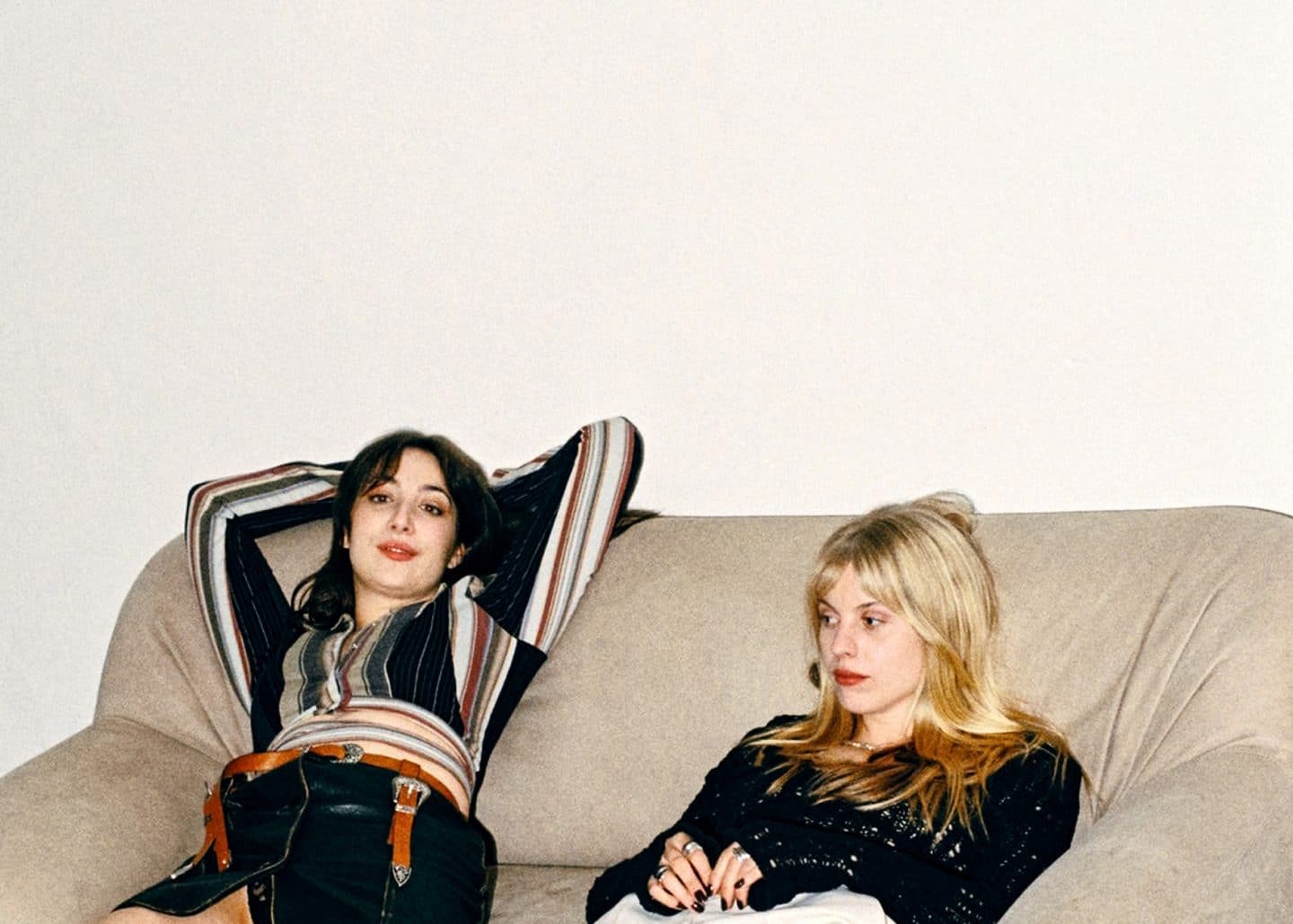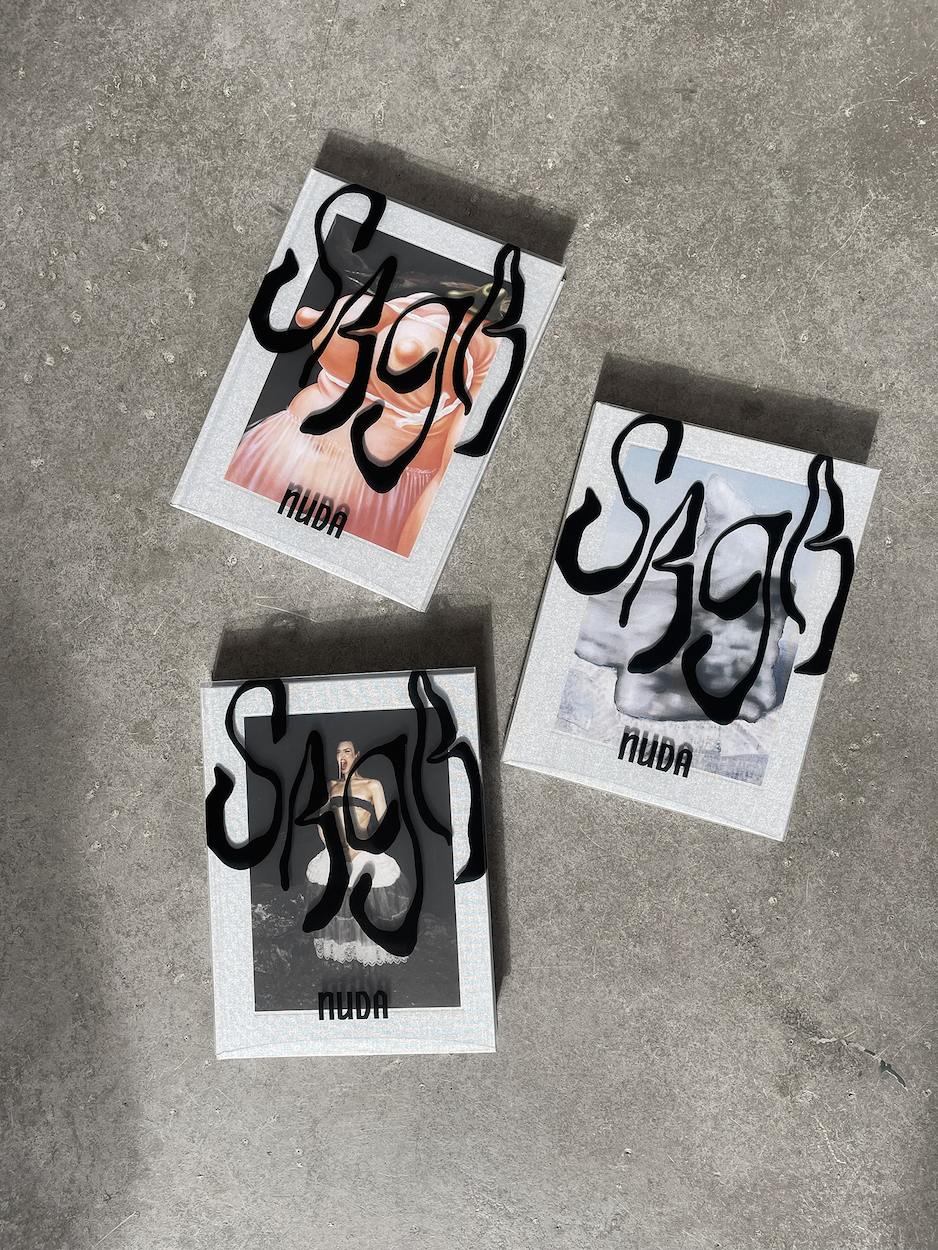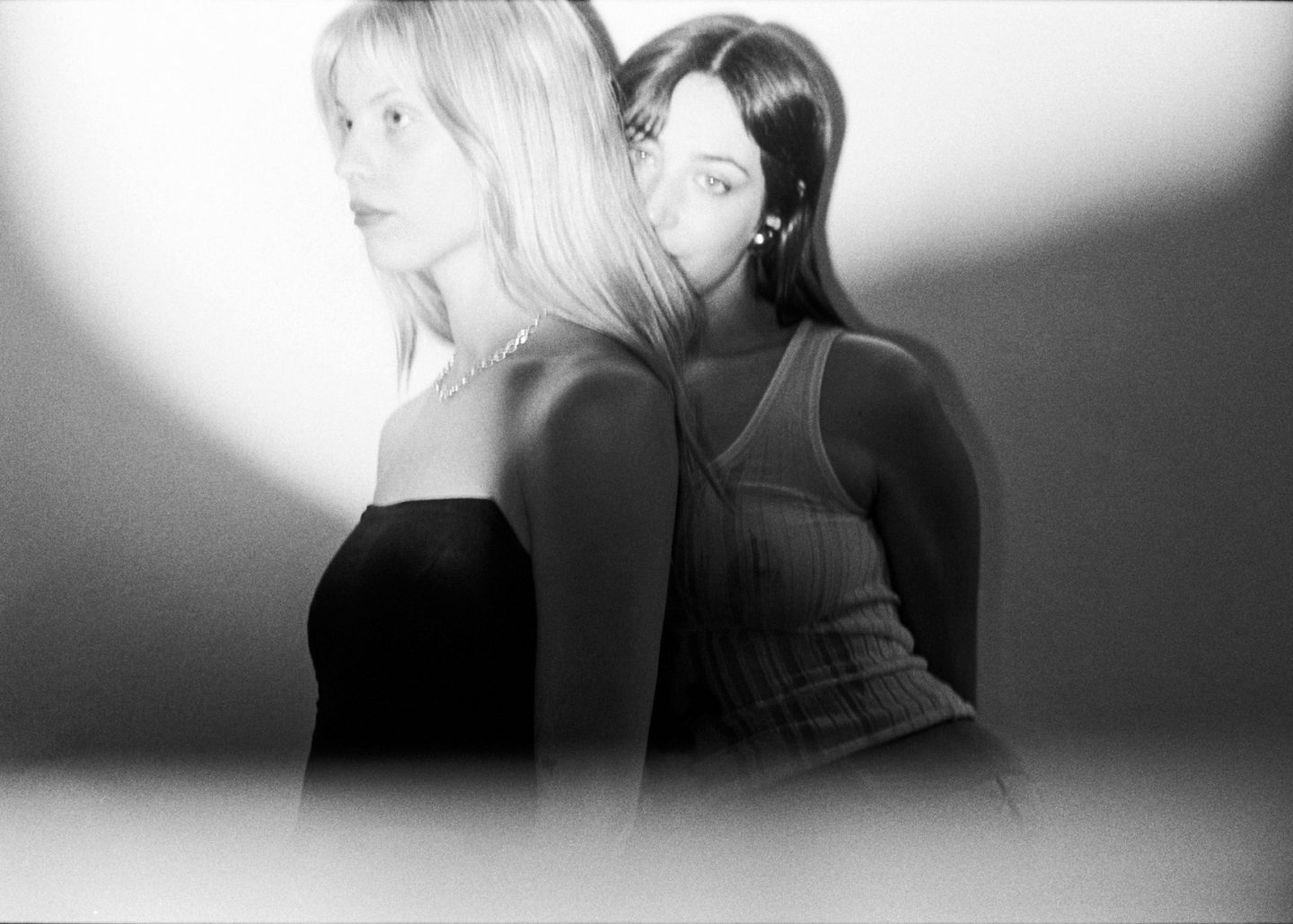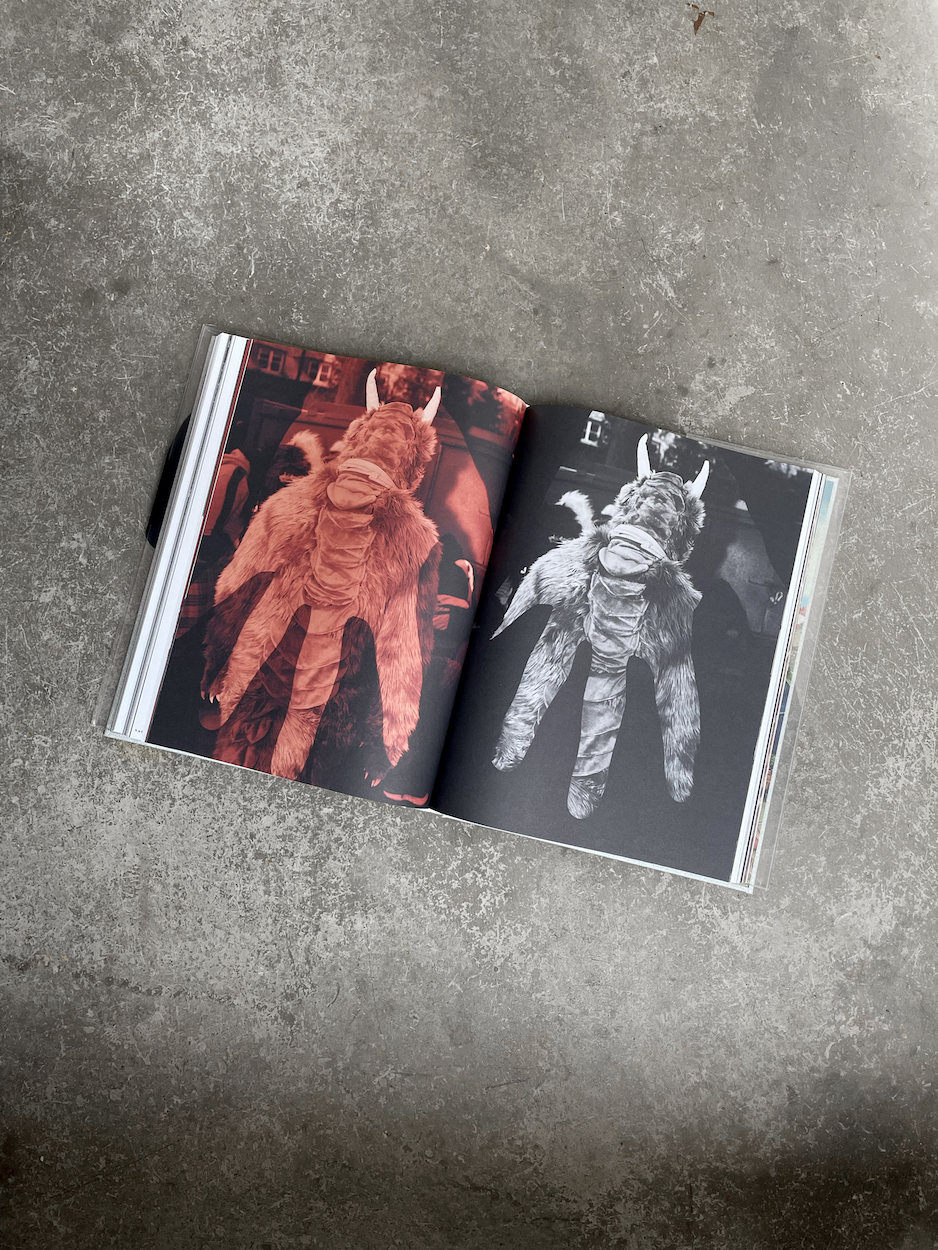
IN CONVERSATION WITH SOPHIE THATCHER
Sophie Thatcher, best known for her role in the critically acclaimed series…
Photography by Jason Renaud; Interview by Louise Garier










Sweden’s hottest independent publication recently came out with a new issue entitled ‘Saga.’ Taking us on a fantasy journey, far from reality, Nuda once again caught my eye like no other. Co-founders Frida Salomonsson and Nora Arrhenius Hagdahl earn admiration with their commitment to freedom when it comes to anything creative. From their boredom of reality to their limitless vision of what a magazine can be and their personal takes on ‘Saga,’ they agreed to share insights into the inner workings of Nuda. Let’s dive into the fantasy, shall we?
Marien Brandon spoke for Numéro Berlin with Sweden’s hottest independent publication Nuda about their beginnings, the new Issue “Saga” and five eight-foot monsters with fangs and claws.
Nora Arrhenius Hagdahl: Not really. One of the core ideas behind Nuda is that it’s supposed to be a place where various perspectives can meet and mingle, it’s kind of the beauty of it. The magazine is really a reflection of me and Frida’s interests – it can be silly and it can be serious, preferably both at the same time. We usually say that every book should be like an eclectic dinner party. Anyone can join as long as they’ve got their own take on the theme. But also, no one wants to listen to a monologue by Carol Baskin from the aperitif to the digestif. You want a dose of madness, a dash of glamor, and a sprinkle of professor, the task is to have a good mix. As with any dinner party, and publication, the guest list is key.
Frida Salomonsson: The only limit, as I see it, is that each contributor should be able to somehow anchor in the overarching theme. But then, we don’t work with overly literal themes either; it’s more like a game of whispers. When you open the lid on a topic like “fantasy,” there are a thousand things that fit inside. There can be dragons, pup play, and UFOs.
“Magazines and independent print is a way to collect the vibes of our time and subcultures.”
Nora: I don’t know if we have any great ideas of what independent print can do to the world of publishing, we don’t really think of our own work as important to a bigger whole, or important at all for that matter – we just really like making books and print and would probably do it even if it made the world a shittier place. We have no grand agenda.
Frida: It’s the impracticality of independent print that makes it so intriguing, you know? There’s just no room for opportunists. Everything about print is cumbersome, heavy, and challenging. It truly separates the wheat from the chaff, those who are really, really moronically passionate about creating publications, the rest wouldn’t really have a go at it. There’s so much heart and soul in these publications.
Nora: We both have a really big interest in other independent prints of course, we like to buy quirky books and magazines to our office. It’s always fun to see what people come up with. In the world of independent print people really play with form and innovate the art of book making. Mainstream publishing will not make hairy books with million bows in. Magazines and independent print is a way to collect the vibes of our time and subcultures.
Nora: I mean epicenter is a bit of an exaggeration, places like London, NY and fashion capitals like Paris have more print than we do. But Stockholm has a really fun literature scene at the moment with publications such as L’amour – La mort, Babo and independent publishing houses such as Cycle Press. We’re also huge fans of the zine Besatt (“Obsessed” in Swedish).
Frida: I think many are drawn to printed matter because there’s a beginning and an end to the project. The internet is always an endless stream where old things you’ve done linger for all to see, breathing down your neck two years later. It’s liberating to put a full stop to a project and dive into the next without constantly being haunted by what you did before. Publications allow creators to have a clean slate, without carrying their entire catalog all the time. Starting a new publication is like wiping your feed. It’s cleansing.
Nora: I think subculture wanna manifest in the physical world today, parallel to whatever you’re doing online. I mean online is nice as well, it’s a way to really find and connect with people from totally different places in the world but I think people are drawn to make IRL objects, it feels more legitimate and undeniable.
“Saga was perhaps my attempt to spark some imagination to my brain’s scriptwriters. You must protect your imagination and delusions at all costs; how else can you endure living in a world so lacking in magic and marvel?”
Nora: We met in high school and have been working together in different ways ever since. We just both liked doing things and I think at this point Nuda could be a bit whatever, we also do exhibitions and other projects aside from the print. We try to be kind to each other and have a lot of respect for each other’s vision and special interests. We’re both really stubborn.
Frida: If I would have done Nuda on my own, it would have leaned in one direction, and if Nora had done Nuda on her own, it would have swayed in another. So, Nuda is basically the result of us each holding onto one end of the rope and it’s important to take turns with pulling and letting go. Our collaboration works best when one of us sparks an idea that sets the other one’s creative wheels in motion. So, an initial thought gets built upon and built upon, and we keep on piling it higher with each other’s contributions. I have a lot of respect for Nora’s brain.
Nora: Whether as a writer or a photographer, it often boils down to pitching your project to someone else, who’s holding the reins on whether it’s a go or no-go. That’s so mind-numbingly fucking boring… With your own platform, who’s gonna say no?
Frida: That’s why you start your own magazine, so no one can put the brakes on our brilliant or even our not-so-brilliant ideas. We’re the queens of your own house of cards.
“I’ll never forget when I had to lead the Finnish rock band Lordi, five eight-foot monsters with fangs and claws, through a hotel lobby of long-haired, mustachioed Sabaton fans screaming “Hard Rock Hallelujah” lowkey aggressively.”
Nora: It was really cute when we went together to Uppsala to interview Bo Gräslund, the archaeologist. He’s really old and sweet and we sat in this very old people’s café and had fun over Beowulf.
Frida: I’ll never forget when I had to lead the Finnish rock band Lordi, five eight-foot monsters with fangs and claws, through a hotel lobby of long-haired, mustachioed Sabaton fans screaming “Hard Rock Hallelujah” lowkey aggressively.
Nora: Pomperipossa is a Swedish fairy tale about a wicked witch in the forest with a long nose. We did a shoot based on the story together with photographer Viktor Naumovski, stylist Nicole Walker and makeup artist Johanna Larsson. The nose prosthetics had to hold up with fishing lines for twelve hours to keep them from falling off.
Frida: It was also absolutely incredible to get Steve Aoki’s tips on how to read books in the shortest possible time and to hear a little about the science fiction book he is currently working on.

Sophie Thatcher, best known for her role in the critically acclaimed series…
Photography by Jason Renaud; Interview by Louise Garier

"We have to create something that has a purpose and is useful. And not forced by the…
Interview Carolin Desiree Becker

Supporting Sydney’s cultural scene: This month’s collaboration reminds us of happy…
Interview by Sina Braetz